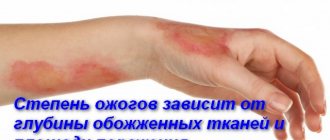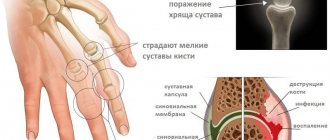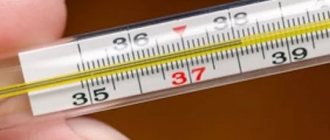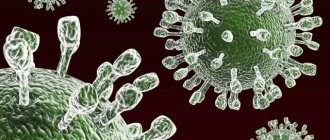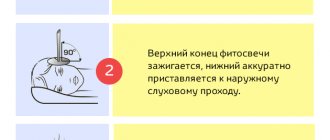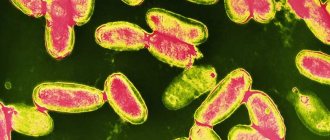Appendicitis - phlegmonous, catarrhal or purulent inflammation of the appendix (caecum) - is a fairly common surgical pathology, in most cases requiring emergency medical intervention. The risk group for inflammation of the appendix includes people aged 20-35 years who suffer from overeating, chronic constipation or systemic pathologies that weaken the activity of immune cells. In children, the main factor leading to an acute inflammatory process is poor hand hygiene, consumption of unwashed fruits, vegetables and unboiled tap water.
In adolescents over 12 years of age, the habit of constantly gnawing sunflower seeds can lead to inflammation of the appendix. Part of the husk, as well as dirt from the hands, enters the child’s digestive tract, and, clogging the appendix, causes its inflammation, which can turn into a purulent form. Treatment of appendicitis in children is no different from treatment in adults, but in this age group the pathological process proceeds faster, which makes timely diagnosis difficult, so parents should know how to identify appendicitis in a child and what to do with its symptoms.
How to determine appendicitis in a child
Causes of childhood appendicitis
- The main reason for the development of appendicitis in a child is mechanical blockage of the lumen of the appendix. Obstruction may be caused by a foreign body, fecal calculus, parasites, or lymph node hyperplasia.
- The reason may also be the individual structure of the process. For example, the presence of bends and torsions.
- The problem may appear in a child with reduced immunity due to infection caused by a cold, otitis media, sore throat, sinusitis, measles and other diseases. The infection may also be associated with intestinal diseases (typhoid fever, tuberculosis, amebiasis, and so on).
- Important! Considering these reasons, to prevent the disease it is necessary:
- Provide proper nutrition containing the right amount of fiber
- Avoid overeating
- Don't eat too much sweets
- Regularly carry out preventive measures to combat parasites
- Try to prevent the appearance of dysbacteriosis
How quickly does appendicitis develop in children?
Attack of appendicitis
is developing very rapidly. Therefore, destructive changes in the process appear quite quickly. In this regard, inflammation is often transferred to the peritoneum and a very life-threatening complication appears: appendiceal peritonitis.
From a simple catarrhal form, appendicitis quickly turns into a destructive one (phlegmonous or gangrenous). If you do not resort to treatment in time and ignore the signs of the disease, it can lead to the following serious complications:
- Perforation of the walls of the appendix and peritonitis
- Periappendiceal infiltrate (may develop into chronic)
- Intestinal obstruction
- General blood poisoning
- Appendiceal abscess
Important! The time from the onset of inflammation to peritonitis can take from 24 to 36 hours.
Chronic appendicitis occurs much less frequently in childhood than in adults. Typically, it manifests itself as periodic pain in the lower right side. Moreover, each such attack is accompanied by classic symptoms: nausea and increased body temperature.
Difficulty of diagnosis
Timely detection of acute appendicitis can save a child’s life, as it will save him from complications. The difficulty with this is that similar symptoms occur in many other diseases. Therefore, it is very important to carry out differential diagnosis. It is necessary to exclude intestinal infection, pyelonephritis, cystitis, cholecystitis, and gynecological pathologies in girls. Especially often, uncomplicated appendicitis is mistaken for an infection, since it also has symptoms such as abdominal pain, vomiting and diarrhea. There are other pathologies that cause the same symptoms as acute appendicitis. Therefore, it is best to go to the hospital and have an examination.
How to check for appendicitis in a child
There, in addition to diagnostic procedures, the child will be observed for several hours. First of all, blood is taken from the child to determine whether there is an inflammatory process in the body. This will be indicated by an increase in the level of leukocytes. Then additional diagnostics are carried out. This may be an abdominal ultrasound or radiography. Sometimes a CT scan is also prescribed.
Characteristic symptoms of acute appendicitis are sometimes detected in children during an external examination. This is pain in the abdomen on the right, as well as muscle tension. The reaction to Shchetkin-Blumberg syndrome must be checked. To do this, apply slow pressure to the abdominal wall, and then quickly release the hand. If there is acute appendicitis, the child feels pain. Many doctors additionally perform a digital rectal examination, which is very informative in acute appendicitis in children.
The first signs of appendicitis in children
The beginning can proceed in different ways. Where exactly the attack begins depends on the location of the appendix.
The earliest symptom
Pain in the navel area is considered. It then moves and concentrates at the location of the process.
- In the classic location: pain moves to the lower right abdomen
- With a pelvic location: the suprapubic region becomes painful and frequent urination appears, as well as diarrhea with mucus.
- With a subhepatic location: pain is felt in the right hypochondrium
- With a retrocyclical (appendix is located behind the rectum) location: the lower back begins to hurt.
Another early sign is refusal to eat.
Nausea and vomiting
In all cases of the disease, a symptom such as vomiting is present. Unlike ordinary poisoning, vomiting does not bring relief.
- Children vomit repeatedly
- For school-age children, single or double
Temperature
Fever is also one of the most important signs.
- In young children
, the temperature rises high to 40° - At the age of 3–5 years, the temperature rises to 38–39°.
- In older schoolchildren (12 years and older), the attack is accompanied by low-grade fever (up to 38°).
Stool
Changes in stool are another of the main symptoms of appendicitis.
- Babies will have loose stools
- Children aged 3–5 years
experience stool retention (not constipation) - Adolescents, like adults, are more likely to experience constipation.
Condition of the tongue
Regardless of age, the surgeon always pays attention to the condition of the tongue. Based on this sign, you can determine at what stage the disease is currently located.
- At the stage of simple or catarrhal appendicitis, the tongue will be wet and covered with a white coating closer to the root
- At destructive stages, in particular at the phlegmonous stage, the tongue will also be wet, but already completely covered with plaque.
- In the gangrenous stage (the most dangerous), the tongue will be dry and completely white.
This symptom should never be ignored, especially if the child is still small.
Other symptoms by age
Up to three years of age, inflammation occurs suddenly and develops very rapidly, so at the slightest sign you should immediately consult a doctor. If possible, it is best to conduct a doctor's examination while you are asleep.
Among the signs of appendicitis in children that should alert parents are:
- Lack of appetite
- Decreased activity
- Cry
- Anxiety
- Poor sleep (especially on the first night after the attack begins)
- Nausea and vomiting
- The temperature can rise to 40° (if the baby is breastfed, the temperature may not rise above 37.5°)
- Diarrhea or frequent bowel movements
- Painful urination
- Increased heart rate
- The baby does not allow himself to be examined, and also bends and pulls his right leg towards him when squatting.
- The pain intensifies when dressing or bending to the right. It hurts for the baby to lie on his right side.
- Frequent loose stools, discharge may contain mucus. Especially if diarrheal appendicitis is present.
In addition to the fact that appendicitis can quickly turn from a simple stage into a destructive one and lead to complications, the danger of the disease also lies in the fact that frequent diarrhea can lead to dehydration.
You should call an ambulance when your child exhibits the following symptoms:
- have a fever not associated with a cold
- stomach hurts for several hours
- Abdominal pain makes it difficult to walk and worsens when coughing
- if the pain decreases with pressure and intensifies if you release your hand
Between the ages of three and five, a child can point out where it hurts. This greatly simplifies the diagnostic process.
The peculiarity of this age is that the child can endure mild pain for some time and not tell his parents about it.
From the age of seven, symptoms in children are the same as in adults. And yet at this age it is quite difficult to make a diagnosis, since he is scared, often cries and is capricious.
At this age, due to fear of surgery, children may say that nothing bothers them anymore and hide the fact that their stomach continues to hurt.
In adolescents over 12 years of age, the so-called “toxic scissors” symptom is observed. This means that the pulse (100 - 120 beats per minute) and the body temperature, which is quite low for such indicators, do not correspond to each other. Only a qualified doctor can check for this and other symptoms.
The table below provides information on the manifestations of the disease at three main ages when appendicitis is likely to occur. In children under one year of age, appendicitis practically does not occur, and in adolescents (from 11 to 18 years old) the symptoms are similar to those of the disease in adults.
| Symptom | In children under 3 years of age | In children from 3 to 6 years old | In children from 7 to 10 years old |
| Feature of age | Can't tell where it hurts. | Can tell where it hurts, but may ignore mild pain and not tell parents. | A child may be afraid to tell their parents about stomach pain because they are scared. |
| Loss of appetite | Refusal to eat is identified as the earliest sign of appendicitis in children | ||
| General condition of the body (weakness) | The child is lethargic, something is constantly bothering him (poor sleep), sharp monotonous crying. | Weakness. Unreasonable irritation and crying. | Weakness. |
| Pain | I have a stomachache. The pain intensifies when bending to the right. The child cannot lie on his left side. Painful sensations when walking. When you press, the pain subsides, but if you release your hand, it intensifies. | The stomach hurts, the nature of the pain, the child is not able to say | At first the whole abdomen hurts, then after 2-3 hours in the classic case it spreads to the lower right half. The pain intensifies when bending down. |
| Body temperature | Up to 40˚С | 38˚С – 39˚С | Up to 38 ˚С (chills) |
| Language |
| ||
| Nausea and vomiting | Nausea and repeated vomiting occur | Vomiting 1 – 2 times | |
| Dry mouth | Present at the last stage of the disease (the child is thirsty) | ||
| Chair | Liquid (sometimes with mucus), causing dehydration. | Bloating (flatulence or increased gas production), stool retention, but not constipation | Constipation is rarely present |
| Urination | Painful | Normal | Normal in a typical case (or frequent, with a pelvic location) |
| Pulse | Above normal | “Symptom of toxic scissors” Pulse does not correspond to body temperature. It is usually higher than normal. Normally, the pulse should increase by 10 beats/min. with a temperature increase of 1˚C | |
| Child behavior | The small child does not allow himself to be examined and pulls his right leg towards him. | Restless | Weakness |
At the age of 14 to 19 years, inflammation of the appendix occurs most often. The symptoms are absolutely identical to those of appendicitis in adults.
In addition to a general examination, girls are given a referral to be examined by a pediatric gynecologist. This helps to rule out pregnancy or diseases of the female genital organs.
What should you not do before the doctor arrives?
It is important for parents to remember that before the doctor arrives, if signs appear:
- You can't put a heating pad on your stomach
- Do not give painkillers (analgesics).
- You can't do an enema
- You can't give laxatives
Neglecting these tips is fraught with serious consequences.
A case from one's life. According to one patient, during an attack in childhood, she was given painkillers for two days. As a result, the girl lost consciousness and underwent surgery with a diagnosis of gangrenous appendicitis with peritonitis. After the operation, she was in intensive care for 4 days.
There are situations when a child’s appendicitis was diagnosed and excised after twelve hours in the clinic. Perhaps the inflammatory process is sluggish and does not manifest itself immediately. Even if, after the ambulance arrives, appendicitis is ruled out, and the symptoms intensify, it is necessary to organize a second urgent mandatory visit to the clinic. This is confirmed by numerous case histories shared by parents on forums.
Important! If you hesitate to visit a doctor and try to treat the disease at home on your own, it is dangerous for the child. Since appendicitis progresses much faster in children, there is a risk that if there is a delay in making a diagnosis, the little patient may lose his life. Even if doctors are not immediately sure of the diagnosis, it is better to leave the child in the clinic for some time for observation.
How to recognize an attack - the main signs
Even if you or your loved ones have had your appendix removed, you may not immediately recognize an attack in your own child. Many diseases in childhood occur in an atypical form, and acute inflammation of the appendix is one of them.
Signs of appendicitis in children:
- lack of appetite;
- vomiting – once or repeatedly, but after the attack it does not get easier;
- at the initial stage of development of the attack, the tongue is wet, you can notice a white coating near the root, gradually the coating covers the entire surface of the tongue, and at the gangrenous stage the tongue becomes dry and completely white;
- weakness, apathy;
- at the last stage of the disease, severe thirst occurs;
- rapid pulse;
- noticeable bloating.
At the initial stage, the pain appears not in the side, but under or above the navel, then moves to the lower abdomen on the right or left, in the suprapubic area, under the right ribs, in the lower back - depending on the location of the appendix.
Urgently call an ambulance if there are no other manifestations of a cold against the background of a high temperature, the child’s stomach hurts for several hours, discomfort in any area of the abdomen interferes with walking, worsens when coughing or bending forward.
Diagnosis of appendicitis in children
At home, parents can lightly feel the boy's or girl's belly. Palpation must be done very carefully. If the child has pain on the right side, you should press a little with your fingers in this area, and some kind of compaction may be felt. If you suddenly remove your fingers and the pain intensifies, you may have inflamed appendicitis. If the pain intensifies when coughing, call an ambulance immediately!
To diagnose the problem, a mandatory examination by a doctor is necessary. During the examination, the doctor uses palpation to determine whether there is muscle tension in the right side of the abdomen, and checks the strength and location of the pain. During the examination, it is also clear whether there is irritation of the peritoneum.
If you suspect appendicitis, to clarify the diagnosis and prevent peritonitis, you must do the following:
- Ultrasound examination (ultrasound). This method makes it possible to determine the presence or absence of acute inflammation with 95% accuracy.
- Complete blood count (allows you to determine the level of leukocytes)
- General urine analysis
If the above is not enough and the clinical picture is unclear, you can also resort to:
- Computed tomography (CT)
- Take an x-ray
- Laparoscopy (the method is used not so much to clarify the diagnosis, but to remove appendicitis)
For chronic appendicitis, the following types of diagnostics are also used:
- Endoscopic examination of the gastrointestinal tract
- Stool analysis
How not to confuse it with other ailments?
In order not to miss the onset of the disease, you need to take into account not only the baby’s complaints, but also the prerequisites for the development of the disease.
Prerequisites for the disease
The inflammatory process in the appendix usually begins due to certain reasons. The development of the disease can be provoked by:
- Reduced immunity. If the body cannot cope with the attack of viruses and bacteria, they can enter the abdominal cavity and cause inflammation of the appendix.
- Frequent infectious diseases. They lead to a decrease in the body's defenses. In weakened children, the appendix often becomes inflamed, the disease is severe, with complications.
- Blockage of the appendix with fecal stones (this happens with frequent constipation) or tumors.
- Worm infestation. In addition to poisoning the body, helminths can accumulate and clog the opening of the appendix.
- Foreign objects that can also block the exit of the appendix.
Most often, in the latter case, the “plug” is created by the husks of seeds or fruit pits. Thus, Spanish scientists conducted a study and found that in 40 percent of 3,000 cases of acute illness, patients ate chips or sunflower seeds. Most of them were children under 14 years old.
Differential diagnosis
Fever, intestinal upset or abdominal pain are not always signs of appendicitis.
Important! It is important to differentiate the disease from similar manifestations of acute respiratory viral infections, diseases of the gastrointestinal tract and excretory system, pneumonia, scarlet fever, otitis media, measles, rubella, and hepatitis.
So, with respiratory infections the symptoms are similar, but there is no sharp pain on palpation of the abdomen. But a runny nose is usually present with them. With pneumonia, there is wheezing in the lungs, shortness of breath, and intermittent breathing. Appendicitis does not manifest itself this way. With otitis in children, pain occurs in the ears, and not in the stomach.
Important! Signs of appendicitis in children can easily be confused with intestinal obstruction. We recommend reading the article: “Intestinal obstruction in children: is it dangerous?”
Instrumental diagnostic procedures help to accurately identify the disease. The most common include general blood and urine tests, ultrasound, but in complex cases a computed tomography may be needed - it is more informative.
Treatment of appendicitis in children: surgery
Treatment is surgery to remove the appendix or appendectomy. Although there are extremely rare cases where a child recovers without surgery, most often it is necessary to resort to surgery.
- For children, appendectomy is best done using the laparoscopic method. This is acceptable in cases where there is no peritonitis yet. This operation lasts only 20 minutes. Three small punctures are made to provide access. A small camera and the necessary instruments are inserted through them.
How this operation is performed on a child is shown in the video:
After laparoscopy, the child will have to remain inpatient treatment in the hospital under the supervision of doctors for about seven more days.
- If appendicitis ruptures
, the person is operated on primarily through an open incision. During an appendectomy, in this case, damaged parts of the intestine are removed and the abdominal cavity is cleaned.
After such an operation, recovery will take longer and intensive postoperative antibiotic treatment will be required. Full recovery may take more than one month.
In children, the postoperative period is complicated by the fact that it is difficult for them not to eat or drink anything for the first day after surgery. They cannot lie still and follow other doctor's recommendations.
Complications after surgery to remove appendicitis
Immediately after an appendectomy, hematoma and swelling in the suture area should be expected. After a few days, the swelling should begin to decrease and the bruising should go away on its own.
During the rehabilitation period, the following undesirable complications are possible:
- Delayed wound healing
- Suppuration of the sutures (often occurs due to the fact that the pus was not completely removed after appendicitis with peritonitis)
If on days 6–9 after surgery the temperature rises sharply, fever is observed and sharp pain appears in the right side, then there is a risk of serious postoperative complications, such as:
- Purulent abscess
- Adhesive disease
- Internal bleeding
- Subphrenic abscess
Treatment
The prognosis for recovery depends on the timeliness of diagnosis and the child’s admission to the surgical department of the hospital. After all, treatment of acute appendicitis is possible only with the help of surgery. Removal of the appendix, or appendectomy, is one of the simplest operations. Its timely implementation ensures the absence of complications and a quick recovery of the child. Before surgery, preparations are made - the child is given antibiotics to prevent infection.
For uncomplicated appendicitis, laparoscopic surgery is now most often performed. To do this, several punctures are made in the peritoneal wall, through which a camera and instruments are inserted. The procedure is performed under anesthesia and lasts about 40 minutes. Complications rarely occur after such an operation, and the child recovers faster.
In difficult cases, when there is a threat of perforation or if the appendix has already ruptured, abdominal surgery is performed. In addition to removing the appendix, the surgeon performs manipulations to prevent peritonitis. This operation can last more than 2 hours. The frequency of complications depends on the state of the child’s immunity and the stage of the pathology.
After the operation, medical observation continues for several hours, then the patient is transferred to the ward. After laparoscopic surgery, the child can be discharged after 3-4 days; in the case of abdominal surgery, recovery will take longer. It is important to follow all the doctor’s recommendations regarding the child’s nutrition and physical activity. Extensive physical activity after surgery is prohibited, but strict bed rest should only be observed for a few days, then you need to start moving. This will help prevent the development of adhesions and intestinal obstruction.
Can a child under one year old have appendicitis?
In one-year-old babies
this disease practically never occurs. Most often, this disease appears at the age of 6 years and older. According to statistics from all cases of this disease in childhood:
- Toddlers account for only 5% of cases
- For preschool age – 13%
- For school – 80%
In infants, the problem is extremely rare, since their appendix lumen is wider, and the appendix itself is shorter in size. In addition, newborn babies have not yet fully developed lymphatic follicles. Moreover, the type of nutrition up to 2 years of age is such that the likelihood of obstruction of the appendix is very small.
Important! The symptoms of appendicitis are very similar to those of other diseases. Abdominal pain in a child can also be caused by the presence of an infection in the body, as well as constipation, overeating, poisoning, and so on. To identify the exact cause of the pain, you need to call a doctor.
Development mechanism
Typically, food that moves through the intestines does not reach the appendix. But sometimes this happens. At the same time, it can no longer leave it and, decomposing, causes an inflammatory process. Gases and mucus are released, which overwhelm the appendix and put pressure on its walls.
The inflammatory process leads to swelling and tension in the walls of the appendix. As a result, venous outflow may be disrupted, which further increases inflammation and proliferation of bacterial flora.
Attention: as the pathology progresses, necrosis of the walls of the appendix may develop, which can lead to their rupture and the release of its contents into the abdominal cavity. This condition threatens the development of peritonitis.
Inflammation of the appendix in children can begin immediately and acutely. In this case, treatment is usually carried out immediately. But sometimes the abdominal pain is not very severe, the child does not complain or the parents do not attach any importance to it. In this case, the pathology can go through several stages:
- first, simple or catarrhal appendicitis develops, in which inflammation affects only the walls of the appendix;
- at the second stage - destructive, the appendix increases in size, blood stagnates there, blood circulation is disrupted;
- if the pathology progresses, inflammation leads to tissue necrosis - this is the gangrenous stage;
- after this, perforation of the walls occurs and the contents of the appendix are released into the abdominal cavity, which leads to inflammation of the peritoneum and blood poisoning.
Symptoms
With inflammation, pain develops on the side in which appendicitis is localized. When the following clinical picture appears, you should immediately call an ambulance.
- The key symptom is pain that appears on the side on which appendicitis develops in a person, that is, on the right, at the bottom of the peritoneum. Discomfort is clearly felt when pressing on the abdomen, especially on the side where the inflammation is located. The abdomen becomes hard to the touch and bloated. It becomes difficult for the patient to walk and stand. He feels relief only in a lying position, with his legs pulled up to his stomach.
- Additional signs. Pain in the abdominal area may be accompanied by symptoms such as an increase in body temperature up to 38 degrees, periodic vomiting and constipation, nausea and back pain. You may experience diarrhea and a painful urge to have a bowel movement, which are often false.
It is not enough to just know which side a person has appendicitis on. It is important to remember additional symptoms, which allows you to consult a doctor in a timely manner, eliminating the likelihood of complications.
It should be noted that a characteristic feature of appendicitis is sharp pain when pressure on the abdomen is relieved. The patient has a white coating on his tongue.
In adults
Men often confuse inflammation of the appendix with inflammation in the bladder or kidney problems. Women mistake the symptoms that arise for inflammation of the appendages.
Appendicitis is a serious danger for people with diseases such as diabetes, obesity, and cancer. Serious consequences can also occur in pregnant women. In order to avoid complications, it is recommended to consult a doctor as soon as possible.
In children
In childhood, the symptoms of appendicitis differ from the manifestations of the inflammatory process in adults. This is due to the fact that in the child’s body the lymphoid tissue of the appendix is poorly developed.
In young children, the location of the appendix is retrocercal (behind the rectum) or subhepatic. This is also the reason why the symptoms differ from the manifestations of the disease in an adult.
In which side does appendicitis hurt in a child? Also on the right side of the lower abdomen. This sign is accompanied by a number of signs characteristic of a child’s body:
- increase in low-grade fever;
- disturbance of urination processes and vomiting;
- bloating, diarrhea, or constipation;
- tachycardia (increased heart rate);
- signs of severe anxiety (sleep disturbances, refusal to eat, crying).
In childhood, the development of the inflammatory process in the area of the appendix occurs rapidly. First, pain occurs in the epigastric region. Discomfort gradually descends to a characteristic location.
If the appendix is in an atypical area, then the pain will be localized in the liver, lower abdomen above the pubis or in the lumbar region, radiating to the groin. In some cases, discomfort may radiate to the back, perineum or groin. In this case, difficulties may arise during the diagnostic process; only an experienced doctor should recognize the disease.
Spanish scientists found that in 40% of cases of acute appendicitis, children under 14 years of age had consumed chips or sunflower seeds the day before.
Diagnosis of the disease
Diagnosis of appendicitis
To diagnose appendicitis, an emergency doctor or specialist at an outpatient appointment examines the patient, collects a medical history, and palpates the abdomen in different projections. To differentiate the pain syndrome of appendicitis from other pathologies (for example, perforation of an ulcer), special symptomatic tests proposed by specialists are used.
| Obraztsov's symptom | The patient is placed in a horizontal position on his back with his legs straightened. After this, they suggest raising your right leg up without bending it at the knees. | At the site of localization of the inflammatory process, the pain will intensify and take a more acute course. If the disease is critical, the patient will not be able to perform this test. |
| Rovsing's test | The test is carried out during palpation of the abdomen in a supine position. The doctor presses on the area where the inflamed appendix is located with jerking movements. | During pressure, the patient does not feel pain, but when the doctor releases the hand, the pain syndrome appears again. |
| Sitkovsky test | The patient is placed first on the right side, then on the left, and his reaction is monitored. | On the right side, the pain stops or becomes less intense. If the patient is turned onto his left side, the pain will be severe and located in a location characteristic of appendicitis. |
In addition, the patient undergoes an ultrasound of the abdominal cavity and pelvic organs; in some cases, magnetic resonance or computed tomography may be required. In very severe cases, emergency surgery may be required without a preparatory examination.
Video - Obraztsov's symptom
Video - Sitkovsky's symptom
What is appendicitis?
Appendicitis is an acute inflammation of the appendage of the cecum (appendix), less often chronic. The main method of treatment is surgery and removal of the appendix. Appendicitis is a disease that is difficult to diagnose. Delaying a visit to the doctor can be extremely dangerous due to the fact that the acute form, peritonitis, quickly develops.
Manifested by abdominal pain, high fever, nausea and vomiting. A number of other diseases, such as poisoning, various infections, duodenal obstruction and others, are accompanied by the same manifestations. The difficulty in making a diagnosis is added by the fact that the appendix is unstable in its position in different people, and can be determined in different projections of the abdominal wall.
Classification of appendicitis
Doctors distinguish several stages of development of the disease, and also divide into types according to the severity of appendicitis. Each stage of disease development follows from the previous one. Simple appendicitis, due to the lack of treatment, provokes complications that lead to the appearance of a severe form of the disease.
Simple
Catarrhal or simple type of inflammation. It is not considered spicy. The symptoms that appear are mild. Swelling and thickening of the walls of the organ are subtle. Diagnosis at this stage allows you to avoid the occurrence of more serious symptoms. The treatment is quick and least painful.
Development of the disease
The next stage of development of the disease is destructive appendicitis. At this stage, there are two possible paths for the further course of inflammation:
- Phlegmonous stage. The size of the process increases significantly. Inflammatory processes contribute to swelling of the organ. A thrombotic phenomenon appears in the blood vessels supplying the appendix.
- Gangrenous stage. Necrotic phenomena occurring in the lumen of the follicular apparatus go beyond the limits. Necrosis of intestinal tissue occurs.
Spicy
The occurrence of an acute form of appendicitis signals the advanced stage of the disease. Pus accumulates inside the caecum, leading to a critical increase in the size of the organ and possibly rupture.
The localization of the pain syndrome depends on the location of the appendix in the child’s body. Deviation from the norm of location makes it difficult to diagnose the disease.
Dr. Komarovsky, a famous pediatrician, gives clinical recommendations on what not to do if there is a suspicion of appendicitis in a child:
- If your baby has a stomach ache, there is no need to give painkillers; this will significantly complicate the diagnosis of the inflammatory process during an external examination by a surgeon.
- Also, do not apply cold compresses to the abdomen to reduce the discomfort.
These actions may lead to an incorrect diagnosis or loss of time as inflammation develops.
Main reasons
The follicular apparatus or appendix is a process located at the very beginning of the cecum. Its size can reach up to 20 centimeters, as a rule, the standard length is from 5 to 7 cm. Inside the organ there is a mucous membrane and lymphoid tissue that perform protective functions against viruses and pathogenic bacteria. Along the entire length of the process there are nerve endings and blood vessels.
Acute appendicitis can develop due to two phenomena:
- The lumen of the appendix narrows.
- The passage to the appendix is blocked.
When the process channel is blocked, the normal outflow of mucus produced inside the organ is disrupted. Inside, the balance of local microflora is disturbed, pathogenic microorganisms begin to multiply, and an inflammatory process occurs. Pediatric surgery identifies common causes of blockage of the passage:
- Fecal stones forming in the rectum. They spread throughout the intestinal tract and can penetrate the appendix.
- The presence in the intestines of foreign objects that are not digested in the gastrointestinal tract. Often the causes of inflammation are the husks of sunflower seeds.
- Worms. Often multiplying, they are able to block the passage in the process.
- As a result of improper development of the intestine, the organ is torsioned and the lumen is blocked.
- Pathologies detected at birth, or incorrect anatomical structure of the cecum.
Mechanical impact that blocks the lumen leads to dysfunction of the appendix. Mucus cannot be removed from the follicular apparatus in sufficient volume or the outflow of fluid stops completely. This contributes to the occurrence of stagnation inside the appendix, increased pressure on the walls, and swelling of the mucous membrane. The supply of oxygen and nutrients is cut off. Pathogenic microflora multiplies. The acute form of the disease develops 12 hours after the onset of the inflammatory process.
Further growth of appendicitis with subsequent rupture and the occurrence of peritonitis takes a short time, within 1-3 days.
Where is appendicitis located, what does it look like?
In almost all people, appendicitis is on the right. It is pain in the right side of the abdomen that is the main sign of inflammation of appendicitis. In order to be more likely to identify this disease in yourself, you must:
- Press your fingertips into the area of the ilium on the right side. If this action intensifies the pain, then with a high probability it can be said that the appendix is inflamed. To be sure, you can do the same action with the left side of the abdomen. If there is no pain, then this is another sign of appendicitis.
- Cough . Typically, with the disease described, muscle contraction when coughing can cause pain in the right side of the abdomen. This may also be a signal that you need to call an ambulance to get professional help.
- Apply pressure with your palm to the area of the ilium and wait 10 seconds. If the pain intensifies after removing the hand, then this is also one of the signs of inflammation of the appendix
- Lie on your left side . In this position, with appendicitis the pain should decrease
IMPORTANT: All of the above methods for diagnosing appendicitis at home cannot guarantee that you do not have inflammation of the appendix. Therefore, at the first symptoms of the disease, you must immediately consult your doctor.
This picture clearly shows where appendicitis is located in a man and a woman.
But, in a small number of people, this process of the rectum can shift in one direction or the other. Sometimes there are people with a mirror arrangement of organs. In this case, the appendix will be on the left.
Which side does appendicitis hurt on?
It is very difficult to answer on which side appendicitis hurts. Yes, we wrote above that the appendix in the vast majority of people is located on the right side of the lower abdomen. But, the pain can “give” to other places in the abdominal cavity. Localization of pain at the location of the appendix occurs already in the acute phase, when inflammation intensifies.
There are several places where pain may be associated with appendicitis:
- Upper abdomen . This pain foreshadows problems with the appendix. It usually occurs suddenly and gradually intensifies. After which the temperature may rise, vomiting and other symptoms of the described disease may appear.
- Whole belly . In some cases, inflammation of the appendix can be “reflected” by pain throughout the abdomen. At the same time, the patient’s well-being deteriorates sharply
- Pelvis . With an atypical location of the appendix (occurs in 30% of people), pain from its inflammation can radiate to the pelvis
- Lower back . Sometimes the pain is reflected in the lumbar back. Therefore, many patients initially think that they have kidney disease.
Provoking factors
For the proper functioning of the digestion process, microflora is located along the entire length of the intestinal tract, representing a balance between beneficial and hostile microorganisms. Therefore, it is impossible to say that local microflora is the cause of inflammation. A certain factor becomes a provocateur, causing pathogenic bacteria to multiply and the balance to be disrupted. But what can cause an imbalance:
- Infection with lymphatic fluid. The purpose of the liquid is to cleanse internal organs of toxins and other toxic substances and remove them through the lymph nodes. Acute viral diseases become a source of toxins that enter the lymph.
- The infection can come in the bloodstream. Developing viruses produce toxins that poison the body; they are easily absorbed into the blood and spread to the internal organs, including the appendix.
We can identify the main reasons that provoke internal changes and become provocateurs of early disease:
- Eating disorder. The risk group includes children from an early age who are not limited in sweets. Parents allow them to eat chocolates, chips and other foods whose positive effects on the body are questionable.
- A child's diet is low in fiber, which is necessary for the proper functioning of the digestive system. There is no stimulation of the intestines, feces pass through the canal poorly.
- Exceeding the permissible dose of sugar in the children's menu. This happens from a large number of chocolates, sweets and other sweets.
- Lack of regular bowel movements for a long time also causes inflammation.
- The occurrence of dysbiosis in the intestinal tract provokes an imbalance in other parts of the organ.
- Gastrointestinal diseases: infections, poisoning, irritation.
- Worms.
Diagnostic and treatment methods
If pain occurs in the abdominal area, a person can try to verify the presence of appendicitis. To do this, you should use one of the following methods.
- Obraztsov's symptom - the patient lies horizontally and straightens his legs. Next, you need to raise your unbent right leg up. With appendicitis, the pain syndrome will increase at the moment. In advanced cases, the patient will not be able to perform this action.
- Rovsing's test - when palpating the abdomen, you need to press on the area on which side the appendix is located. Movements should be jerky. When pressed, the patient does not experience discomfort. Pain appears when the hand is released.
- Sitkovsky test - the patient lies on the right side, and then on the left. On the right side the pain subsides or stops completely. When turning to the left side, the discomfort increases and is concentrated in the area where the appendix is located.
If you suspect appendicitis, you should call an ambulance. Before the doctor arrives, do not give the patient food, drink, or painkillers. It is unacceptable to use a hot heating pad or put pressure on the stomach.
Appendicitis can only be treated surgically. The sooner treatment measures are taken, the less likely it is to develop complications.
How to help your child at home
If a child or teenager complains of discomfort in the right side that does not disappear for a long time, do not delay in calling an ambulance at home. Before the doctor arrives, put the child to bed, give him plenty of cool fluids to drink, and place a damp towel on the painful area. Remember the last time the patient ate, ask about the nature of the pain, measure the temperature.
When appendicitis begins to hurt, the desire to relieve the pain is natural for every parent. But you should not alleviate the condition with painkillers, as they make it difficult to make a diagnosis. In acute cases, delaying surgery can be life-threatening.
Giving children laxatives to improve bowel movements is also not recommended. Drugs in this group accelerate the rupture of the appendix. Warming the problem area, as well as administering enemas, is unacceptable. Like laxatives, the measures will cause the appendix to burst. The leakage of the contents of the appendix threatens peritonitis, in other words, inflammation will spread throughout the peritoneum.
Why is acute appendicitis dangerous?
In adults and children over 10–12 years of age, the greatest risk is phlegmonous appendicitis. In this case, the vermiform appendix becomes like a sac, filled to capacity with liquid pus, and can break into the abdominal cavity. If the appendix bursts, peritonitis will develop - diffuse inflammation throughout the abdomen. Then the operation will have to be performed on a larger scale in order to thoroughly rinse the abdominal cavity from pus with antiseptics. A long course of several antibiotics and long hospital treatment will be required. The child’s body is not able to independently curb the infection and limit inflammation in only one area of the abdominal cavity. Surrounding organs are easily involved - intestinal loops, pelvic organs, liver. However, the most likely complication is a systemic inflammatory reaction (sepsis, popularly known as blood poisoning) due to the immaturity of the immune response. Therefore, the sooner parents suspect something is wrong, the higher the likelihood of a quick recovery.
Appendicitis: symptoms in children 10 years old, photo of a sick child
Many parents resort to online sources when their child’s condition worsens. The information posted on medical websites is often reliable, but in any case it is very important to seek qualified medical help as quickly as possible. Only a doctor based on symptoms will 100% confirm the pathology, if any. Photos of sick children posted in the article can only give an approximate idea of the problem.
What can you eat after appendicitis surgery?
After surgery and anesthesia, the patient’s body, as well as his digestive system, is subjected to great stress. It can be minimized with a special diet. It is divided into several stages, depending on the recovery time.
FIRST 24 HOURS AFTER SURGERY
On the first day after surgery, the patient usually does not have time to eat. Anesthesia, as well as the consequences of an inflamed appendix, negatively affect nutrition. But restoring the body after suffering a “shock” is impossible without taking healthy foods. And on the first day after surgery, they should enter the body with fluids. It is best if it is warm tea, berry compotes, jelly and plain water.
You can switch to harder products only with the permission of your doctor.
SECOND AND THIRD DAYS POST OPERATION
On the second day after removal of the appendix, the patient, as a rule, can eat low-fat broths. If the patient can eat protein, then doctors will allow him to include yogurt and other soft dairy products in his diet.
In addition to compotes and tea, on the second day the patient can drink non-acidic juices.
IMPORTANT: After surgery you need to eat in small portions several times a day. The inclusion of certain foods in your diet must be agreed with your doctor.
3-7 DAYS AFTER SURGERY
After the first three days of recovery after such an operation, the patient can diversify his diet with steamed dried fruits, boiled vegetables, chicken broth and various porridges cooked in water. The doctor may allow boiled chicken or boneless steamed fish.
Signs of inflammation in babies
The appendix in young children is shaped like a funnel. This structure practically eliminates mechanical blockage of the lumen. However, there are factors that create conditions for the development of inflammation before the age of 3: imperfection of the follicular apparatus, vulnerability of the thin walls of the process.
Appendicitis in a child aged 2, 3, 4, 5 years can be recognized by the following signs:
- sudden lethargy, crying;
- complaints of severe pain in the side;
- temperature rise up to 40 degrees;
- chills, fever;
- repeated vomiting;
- loose stools with mucus;
- frequent urination;
- increased heart rate.
Since inflammation causes digestive problems, bowel movements may be difficult. The pain sometimes radiates to the right leg, and the child begins to limp. In some cases, babies are bothered by a false urge to go to the toilet, which is associated with the accumulation of gases. As appendicitis develops, dry mouth appears and the tongue is coated with a white coating. High fever, vomiting and diarrhea provoke dehydration of the body, so the baby becomes sharply weaker and muscle pain occurs.
Recovery period after surgery
The operation to remove the appendix traumatizes the body and requires a recovery period, which includes:
- Postoperative patient care. The patient must follow the recommendations of the medical staff, get up at the indicated time, and receive the necessary therapy;
- Dieting. Consume foods and dishes approved by your doctor to reduce the load on your intestines;
- Minor physical activity will help improve blood circulation and speed up metabolism.
- It is necessary to monitor the child’s stool, every other day it is necessary to empty the intestines either independently or use an enema;
The recovery period is a necessary part in the treatment of appendicitis.
What should you not do if you have appendicitis?
If all the signs indicate the development of the appendix, you need to remember that there are some things that cannot be done.
So, you can't:
- Give your child painkillers so as not to blur the symptoms of the disease. It will be difficult for the doctor to identify the causes and begin treatment;
- Take laxatives so as not to irritate the intestines;
- Applying heat to the site of inflammation - this increases the pain;
- Give an enema to avoid possible complications;

